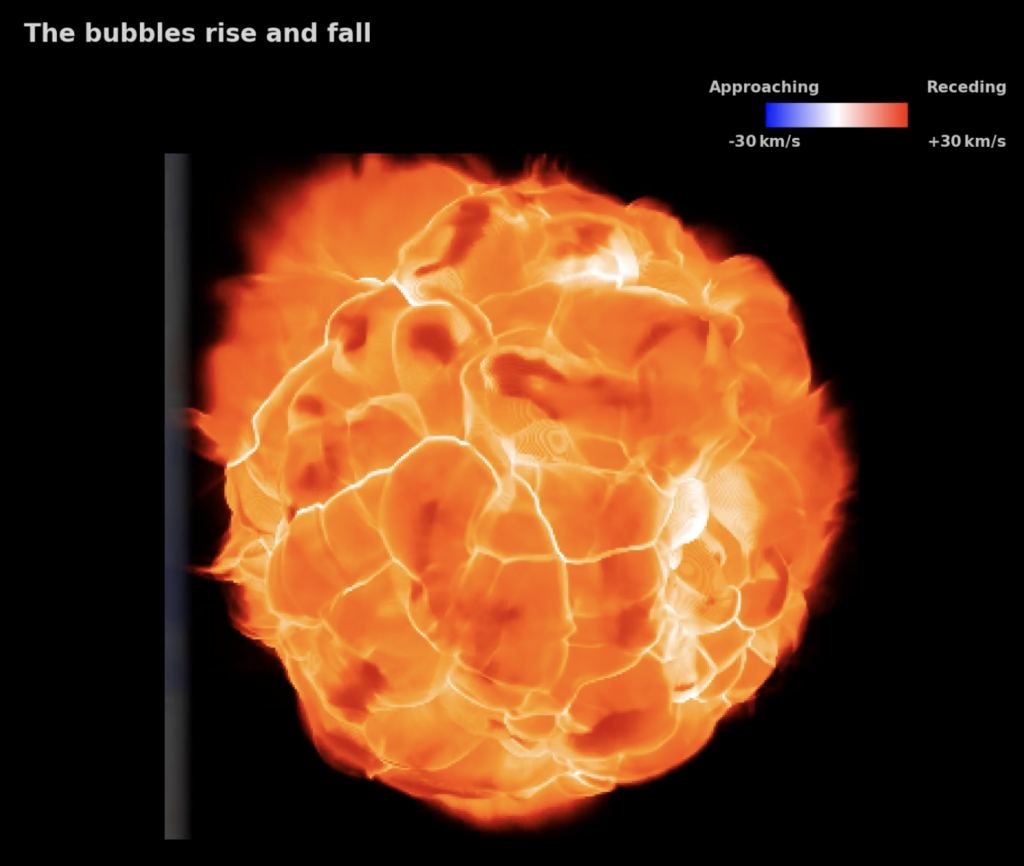Betel-gurz or Beetle-juice has been a favorite amongst beginner astronomers for a few years. Nonetheless you pronounce it, its sudden dimming draw much more consideration to this purple supergiant variable star in Orion.
It has a number of cycles of variability, one in all them happens over a 2,170 day interval, 5 occasions longer than its regular pulsation interval. A paper has simply been printed that implies a companion star of 1.17 photo voltaic plenty might be the trigger.
It will want an orbit about 2.43 occasions the radius of Betelgeuse and it would simply result in the modulation of mud within the area that causes the variations we see.
One of many brightest stars within the sky, Betelgeuse is a purple supergiant discovered located prominently on the higher left of the constellation Orion. It represents the shoulder of the hunter though some translations counsel it refers to ‘the armpit of the large!’
It is one of many largest stars seen to the unaided eye with a radius about 1,000 occasions the Solar. At a distance of 642 gentle years away, its brightness in our sky tells us it should be giving out about 100,000 occasions extra gentle than the Solar.
During the last 5 years it has been getting particular consideration as a result of its sudden dimming.
Floor-based picture of the Constellation of Orion. The Hubble Area Telescope continues to disclose varied gorgeous and complicated treasures that reside throughout the close by, intense star-forming area often known as the Nice Nebula in Orion.
The dimming occurred towards the tip of 2019 and the returned to regular within the first half of 2020. It is typically accepted that the dimming was brought on by a mud cloud within the occasion that has now been dubbed ‘The Nice Dimming.’
As a well-known variable star, the sunshine curve of Betelgeuse shows a Lengthy Secondary Interval (LSP) of roughly 2100 days. It is commonplace for stars within the Purple Big Department of the Hertzsprung-Russell Diagram and might vary from a number of hundred days to hundreds.
To this point although, the mechanism behind the LSP is unknown nevertheless it actually does appear to be a secondary cycle to a shorter one. Curiously the length of the LSP appears to be typically within the area of some tens of occasions slower than the celebrities radial pulsation.
It is the character of this long run variability in Betelgeuse that’s the focus of a brand new paper printed by Jared A. Goldberg and his group. A higher understanding will result in a higher readability of Betelgeuse’s evolutionary stage and finally to its dying.

One answer factors to it merely being the results of the pulsation of the outer layers. If this had been the case then it means Betelgeuse is bigger than anticipated and could be additional alongside its evolution department and {that a} supernova explosion could also be imminent throughout the subsequent few hundred years!
An thrilling prospect for the stargazers amongst us.

Curiously although, the group conclude that the most probably rationalization for the long run variability of Betelgeuse is a low mass companion star, named Ori B (Betelgeuse bares the choice title Orionis.)
It’s potential that this binary star might be modulating the mud surrounding the system and when the companion is in transit, the mud results in a discount in brightness. If Ori B had been to be confirmed, it might have a major influence on our evolutionary understanding of Betelgeuse.
It’s anticipated to go supernova quickly however that is largely as a result of noticed variations led to the conclusion it was shut. As an alternative, Ori B being the trigger means we could have a while to attend in spite of everything.
This text was initially printed by Universe At present. Learn the unique article.




